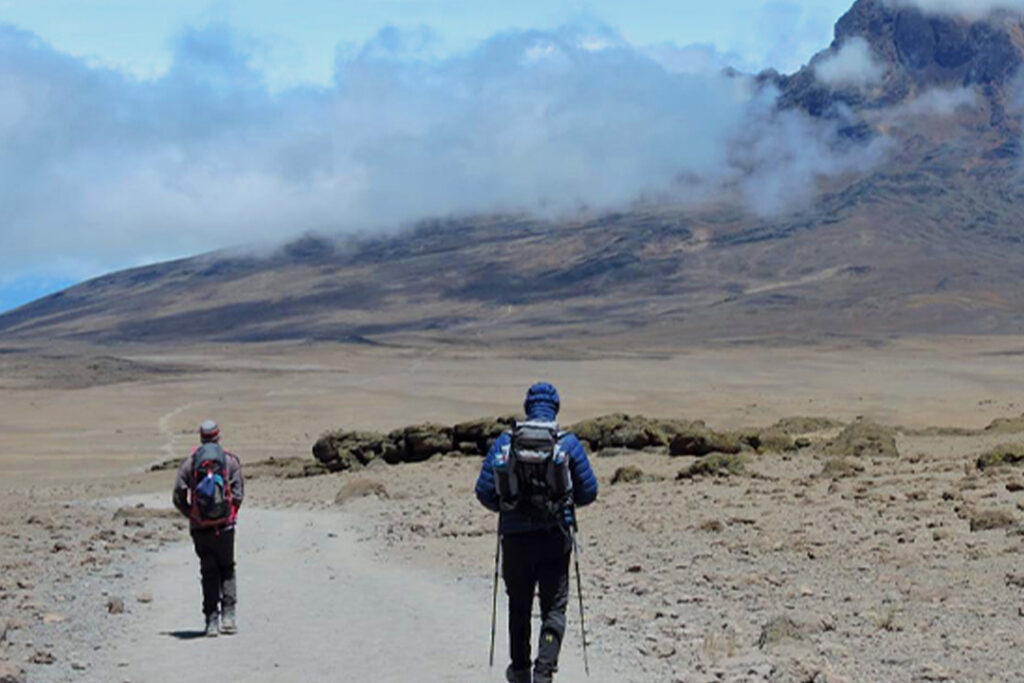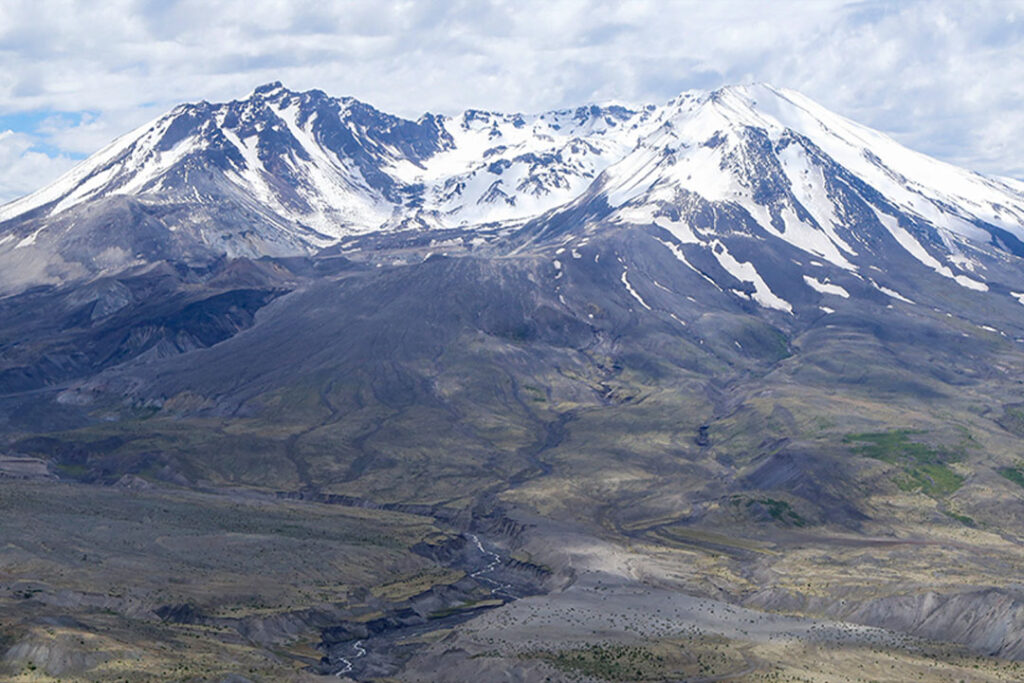Conquer Kilimanjaro:
Africa's Rooftop Adventure
ABOUT KILIMANJARO





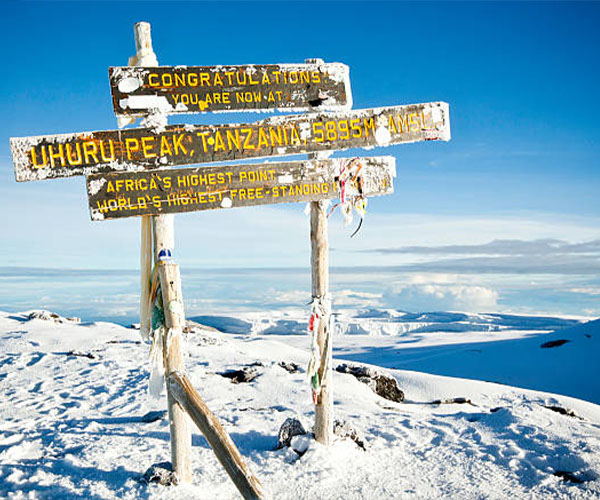
Chief Tours: Your Kilimanjaro Climb Experts.
Kilimanjaro Experts & Altitude Specialists
- Our guides are Kilimanjaro veterans with hundreds of successful summits. They know every trail, climate zone, and altitude challenge. They'll help you acclimatize safely, boosting your chances of reaching Uhuru Peak.
Tailor-Made Kilimanjaro Routes
- We offer all major Kilimanjaro routes and can customize your trek. Whether you want a quick ascent or a longer journey to enjoy the mountain's diverse ecosystems, we've got you covered. Your dream Kilimanjaro adventure starts here.
Mountain-Top Meals & Caring Crew
- Good food keeps you strong on Kilimanjaro. Our skilled cooks make tasty, energy-packed meals at every camp. Whether you're vegan, gluten-free, or have other food needs, we've got you covered. Our friendly team works hard to keep you comfortable, so you can focus on conquering the mountain.
Fair Prices, Fair Treatment
- We offer competitive rates without cutting corners. Our prices reflect fair wages for our hardworking porters and staff. With Chiefs Tours, you're supporting ethical tourism on Kilimanjaro while getting great value for your adventure.
What our clients say about us
]Thanks to Adidas and the staff, After my unsuccessful attempt last year, I've reached the pinnacle at last. Since the beginning, Adidas has been incredibly polite and considerate to my friend and I. They have picked us up from the airport and meticulously set up our equipment. Thanks to Adidas and the staff, we had an incredible experience! I would heartily suggest them to anyone who wishes to climb Kilimanjaro; Chief made for an incredible experience and many memories! Herschel Alvarado2024-06-09Best group of people We were able to reach the summit cheerfully and safely thanks to Chief's Tour. Excellent guides who never gave up on us and successfully led us to the summit on our excellent morning ascent. Every employee at Chiefs Tours contributed to our success. They made sure we were well-fed and rested so we could start each morning strong. Using this firm is highly recommended, as they also arranged for our safari to the Ngorongoro Crater.
Herschel Alvarado2024-06-09Best group of people We were able to reach the summit cheerfully and safely thanks to Chief's Tour. Excellent guides who never gave up on us and successfully led us to the summit on our excellent morning ascent. Every employee at Chiefs Tours contributed to our success. They made sure we were well-fed and rested so we could start each morning strong. Using this firm is highly recommended, as they also arranged for our safari to the Ngorongoro Crater. Tarun V2024-06-07Chief Tours is just amazing. Chief Tours is just amazing. Adidas was really helpful right from the airport. They undoubtedly go above and above to enhance our enjoyment. There's little doubt that the support, encouragement, food, plans, and direction were the main factors in our 10-person team's success! I am already missing the incredible people we met on this trip, and I could not have asked for a more wonderful experience.
Tarun V2024-06-07Chief Tours is just amazing. Chief Tours is just amazing. Adidas was really helpful right from the airport. They undoubtedly go above and above to enhance our enjoyment. There's little doubt that the support, encouragement, food, plans, and direction were the main factors in our 10-person team's success! I am already missing the incredible people we met on this trip, and I could not have asked for a more wonderful experience. Shivakant K2024-06-05Strongly suggest! My time climbing Kilimanjaro was incredible! The group I traveled with was excellent, and Soleman, our guide, was really kind. The company gave me some excellent equipment. It was among my life's greatest moments! Strongly suggest!
Shivakant K2024-06-05Strongly suggest! My time climbing Kilimanjaro was incredible! The group I traveled with was excellent, and Soleman, our guide, was really kind. The company gave me some excellent equipment. It was among my life's greatest moments! Strongly suggest! Aminat H2024-06-04I'd want to thank you everyone for a great summit! Chief's Tours exceeded our expectations by providing exceptional care during our climb of Mount Kilimanjaro. The individuals in charge were really professional when we communicated with them immediately. Everything proceeded as planned, and the trekking staff was outstanding. Without the assistance of my mentors Frank and Emmanuel, I would not have reached the summit. The porters are really animals, hauling all that weight up the mountain, and the cook, who must have been an Iron Chef competitor, made some mean meals. I'd want to thank you everyone for a great summit!
Aminat H2024-06-04I'd want to thank you everyone for a great summit! Chief's Tours exceeded our expectations by providing exceptional care during our climb of Mount Kilimanjaro. The individuals in charge were really professional when we communicated with them immediately. Everything proceeded as planned, and the trekking staff was outstanding. Without the assistance of my mentors Frank and Emmanuel, I would not have reached the summit. The porters are really animals, hauling all that weight up the mountain, and the cook, who must have been an Iron Chef competitor, made some mean meals. I'd want to thank you everyone for a great summit! Stephen O2024-06-02If at first you don’t succeeed try try again This saying has brought new meaning to me. In December (see previous review) my wife e and I weren’t able to complete a goal we have had for a a few years now. We left Kilimanjaro disappointed and a little defeated but quickly realized with some changes (including the time of year) and refocus we could succeed. On February Feb 11th we both sumitted the tallest free standing mountain in the world fighting mental and physical challenges along the way. We chose to use the same tour operator (Chiefs Tours) and guides as we did on our first attempt because they did everything right (including supporting our decision to turn around and not put us in further danger). They all possess an amazing spirit and a way at looking at life that compels you to want to be better. They use the saying pole pole over and over to remind you to go slowly (which is one of the keys to success to summit) along with some of their other sayings like drink water and eat (like a nagging mother) but your mind and body make different choices on the mountain and they are there to ensure you find success. What I learned on the way down is that pole pole applies to everything in life. If you take it slowly you will achieve all your goals. I don’t think I can adequately describe in words the experience. That is something each person needs to decide if it’s for them and do. I can say, time of year makes a huge difference as our first attempt was during the rainy season while we had what I considered perfect weather in February. I can also say that it truly takes a team (one team one dream, one dream one team was something we would repeat often together). Our guides, Jackson and Frank, porters and chef all played a huge role in our success and I in awe of the jobs they have and the lifetime memories they help so many make. Jackson literally carried me down a portion of the mountain because my legs just stopped doing what my brain wanted them to. They push when they have to and listen when they need to. We are also trying to spread organ donation awareness. Being a living organ donor doesn’t mean you can’t still chase your dreams and find success in either achieving them or learning from coming up short. But it does give someone else the chance to try to achieve their’s. So please consider being a living organ donor and at the very least share stories of people looking for an organ donation on your socials.
Stephen O2024-06-02If at first you don’t succeeed try try again This saying has brought new meaning to me. In December (see previous review) my wife e and I weren’t able to complete a goal we have had for a a few years now. We left Kilimanjaro disappointed and a little defeated but quickly realized with some changes (including the time of year) and refocus we could succeed. On February Feb 11th we both sumitted the tallest free standing mountain in the world fighting mental and physical challenges along the way. We chose to use the same tour operator (Chiefs Tours) and guides as we did on our first attempt because they did everything right (including supporting our decision to turn around and not put us in further danger). They all possess an amazing spirit and a way at looking at life that compels you to want to be better. They use the saying pole pole over and over to remind you to go slowly (which is one of the keys to success to summit) along with some of their other sayings like drink water and eat (like a nagging mother) but your mind and body make different choices on the mountain and they are there to ensure you find success. What I learned on the way down is that pole pole applies to everything in life. If you take it slowly you will achieve all your goals. I don’t think I can adequately describe in words the experience. That is something each person needs to decide if it’s for them and do. I can say, time of year makes a huge difference as our first attempt was during the rainy season while we had what I considered perfect weather in February. I can also say that it truly takes a team (one team one dream, one dream one team was something we would repeat often together). Our guides, Jackson and Frank, porters and chef all played a huge role in our success and I in awe of the jobs they have and the lifetime memories they help so many make. Jackson literally carried me down a portion of the mountain because my legs just stopped doing what my brain wanted them to. They push when they have to and listen when they need to. We are also trying to spread organ donation awareness. Being a living organ donor doesn’t mean you can’t still chase your dreams and find success in either achieving them or learning from coming up short. But it does give someone else the chance to try to achieve their’s. So please consider being a living organ donor and at the very least share stories of people looking for an organ donation on your socials. Phulishone2024-05-28This was the highlight of the entire experience! We recently used Chief Tours to climb Kilimanajaro in seven days via the Machame Route. Chief Tours could not have done a better job; it was an amazing experience. Everything was expertly planned, the food was amazing, and we were able to rent all of the equipment we required for no additional charge. We could not have reached the summit without the assistance, encouragement, and singing of the personnel, from the porters to the guides, who were all incredibly kind and kind. This was the highlight of the entire experience!
Phulishone2024-05-28This was the highlight of the entire experience! We recently used Chief Tours to climb Kilimanajaro in seven days via the Machame Route. Chief Tours could not have done a better job; it was an amazing experience. Everything was expertly planned, the food was amazing, and we were able to rent all of the equipment we required for no additional charge. We could not have reached the summit without the assistance, encouragement, and singing of the personnel, from the porters to the guides, who were all incredibly kind and kind. This was the highlight of the entire experience! Ethan Morris2024-05-26Chief’s Tours is the right choice for your Tanzania adventures! Our trip to Kilimanjaro was 4 years in the making and Chiefs Tours supported us the entire time up until a difficult decision but there is summit in our future and I can’t wait to do it with chiefs! 4 years ago I watched a video about climbing Kili and decided it was something I wanted to do. I started reaching out to a few well reviewed companies and Chiefs tours was the most responsive and reasonably priced. Our planning got interrupted by some surgeries and covid but the entire time adidas (owner/operator of chiefs) always was responsive and willing to adjust with our schedule. We finally made it a reality this December. We were greeted at the airport after realizing one of our bags didn’t make it. Adidas took our lost baggage ticket and said this was his problem now. Ended up our bag went on to Zanzibar and adidas had it back at our lodge later that night! The lodge we stayed at (kilele) was comfortable and perfect for before and after our climb. We were served wonderful food and drinks by cheerful and helpful staff. That day, adidas and our guides met us at the lodge to discuss our climb and answer any of our final questions. They checked our gear to ensure we had what we would need to be successful. The next morning the team took us to pick up some gear we were renting and to get the porters and head to the market to get the supplies we would need. We booked a 6 day lemosho route. Our fitness level is pretty high and we ski at altitude so felt this was a good fit for us. Day 1 was hiked almost entirely in rain, given it was still part of the rainy season and we were in the rain forest zone. This wasn’t a surprise. A failure in our dry bag however caused my wife’s clothes and her sleeping bag to get wet. Unfortunately even with the best effort of our guides and porters we weren’t able to get things dried out and after a night at Shira II where it was colder we made the difficult decision to turn back. Our guides (Jackson and frank) and porters tried everything they could to allow us to continue on but ultimately supported our decision to hike back and made all the arrangements for us to do this. The entire team works so hard to make sure you are taken care of and happy and they take such pride in their work. It is infectious. Our meals prepared by Jeff were wonderful and mindful of the kind of food we needed for each day. Every night our health was checked and we discussed what the next day would entail. We are already discussing with chiefs coming back to finish what we started in 2024, so you can see how confident we are in this company and its dedicated employees. I highly recommend chiefs for your kilininjaro climb!
Ethan Morris2024-05-26Chief’s Tours is the right choice for your Tanzania adventures! Our trip to Kilimanjaro was 4 years in the making and Chiefs Tours supported us the entire time up until a difficult decision but there is summit in our future and I can’t wait to do it with chiefs! 4 years ago I watched a video about climbing Kili and decided it was something I wanted to do. I started reaching out to a few well reviewed companies and Chiefs tours was the most responsive and reasonably priced. Our planning got interrupted by some surgeries and covid but the entire time adidas (owner/operator of chiefs) always was responsive and willing to adjust with our schedule. We finally made it a reality this December. We were greeted at the airport after realizing one of our bags didn’t make it. Adidas took our lost baggage ticket and said this was his problem now. Ended up our bag went on to Zanzibar and adidas had it back at our lodge later that night! The lodge we stayed at (kilele) was comfortable and perfect for before and after our climb. We were served wonderful food and drinks by cheerful and helpful staff. That day, adidas and our guides met us at the lodge to discuss our climb and answer any of our final questions. They checked our gear to ensure we had what we would need to be successful. The next morning the team took us to pick up some gear we were renting and to get the porters and head to the market to get the supplies we would need. We booked a 6 day lemosho route. Our fitness level is pretty high and we ski at altitude so felt this was a good fit for us. Day 1 was hiked almost entirely in rain, given it was still part of the rainy season and we were in the rain forest zone. This wasn’t a surprise. A failure in our dry bag however caused my wife’s clothes and her sleeping bag to get wet. Unfortunately even with the best effort of our guides and porters we weren’t able to get things dried out and after a night at Shira II where it was colder we made the difficult decision to turn back. Our guides (Jackson and frank) and porters tried everything they could to allow us to continue on but ultimately supported our decision to hike back and made all the arrangements for us to do this. The entire team works so hard to make sure you are taken care of and happy and they take such pride in their work. It is infectious. Our meals prepared by Jeff were wonderful and mindful of the kind of food we needed for each day. Every night our health was checked and we discussed what the next day would entail. We are already discussing with chiefs coming back to finish what we started in 2024, so you can see how confident we are in this company and its dedicated employees. I highly recommend chiefs for your kilininjaro climb! Phulishone2023-12-22Thank you for the moving experience I am grateful to my guide Frank and the porters for the 6-day Lemosho route, which was an amazing experience. They planned a climbing plan that suited each person, and they were flexible during the climb. I was nervous because it was my first trip to Africa alone as a woman. Before making the reservation, I called and spoke to the person in charge (Adidas). They picked me up at the airport, so I didn't need to find a taxi. And on the way back, they picked me up at the designated hotel, so I didn't need to use a taxi during my stay. I could have arranged for a porter to be with me, but when I told them I wanted to climb with other climbers, they arranged it for me. On the third day, when I had a headache, my guide Frank told me to take painkiller (said Loxonin in Japan) and see how it went because the side effects of taking altitude sickness medicine were more scary. Also, my companion had been taking altitude sickness medicine since the middle of the climb, so I advised him to continue taking it even if he didn't have a headache. Thanks to that, my headache disappeared and I was able to climb without any problems even when I tried to reach the summit without getting altitude sickness. It was also helpful that they adjusted to my individual wishes, such as the time to leave camp for the summit attempt, and whether I would arrive in time for sunrise. I didn't mind not seeing the sunrise at the summit, so I used that time to sleep and focus on recovering my strength. Also, on the fifth day, when one of the other guides injured his leg after the summit attempt and was unable to walk, they quickly arranged for a helicopter (and confirmed that insurance was in place) and handled the accident smoothly. It was thanks to everyone that we were able to descend safely. Thank you very much.
Phulishone2023-12-22Thank you for the moving experience I am grateful to my guide Frank and the porters for the 6-day Lemosho route, which was an amazing experience. They planned a climbing plan that suited each person, and they were flexible during the climb. I was nervous because it was my first trip to Africa alone as a woman. Before making the reservation, I called and spoke to the person in charge (Adidas). They picked me up at the airport, so I didn't need to find a taxi. And on the way back, they picked me up at the designated hotel, so I didn't need to use a taxi during my stay. I could have arranged for a porter to be with me, but when I told them I wanted to climb with other climbers, they arranged it for me. On the third day, when I had a headache, my guide Frank told me to take painkiller (said Loxonin in Japan) and see how it went because the side effects of taking altitude sickness medicine were more scary. Also, my companion had been taking altitude sickness medicine since the middle of the climb, so I advised him to continue taking it even if he didn't have a headache. Thanks to that, my headache disappeared and I was able to climb without any problems even when I tried to reach the summit without getting altitude sickness. It was also helpful that they adjusted to my individual wishes, such as the time to leave camp for the summit attempt, and whether I would arrive in time for sunrise. I didn't mind not seeing the sunrise at the summit, so I used that time to sleep and focus on recovering my strength. Also, on the fifth day, when one of the other guides injured his leg after the summit attempt and was unable to walk, they quickly arranged for a helicopter (and confirmed that insurance was in place) and handled the accident smoothly. It was thanks to everyone that we were able to descend safely. Thank you very much. Moe2023-10-117 day trek via Lemosho route Chiefs tours was recommended to me by one of my close friends who also climbed Kilimanjaro back in 2021. I could not say enough as of how incredible this experience was and how Chiefs tours made it even more epic. The owner Adidas was quick to provide quotes on time, explain throughly what to expect during the trek, provide a list of what we needed to pack before our trip and an easy way to pay for the tour before we headed to Tanzania. Once we landed in Kilimanjaro, they were quick to get our details for pick up. The entire trip was door to door service, they picked us up from our hotel in Arusha and dropped us off back at the airport when we finished. While we were in Moshi they provided a very comfortable stay that included drinks and food, a comfortable bed, hot water and WiFi. We did the 7 day trek via Lemosho route. For our trek they got us the best guides and crew. We had 10 people for 2 of us hikers (right?!). Yes, you need this many people to get you up and down a mountain in 7 days. The crew was incredible, they made sure we had our tent set up before we got to every stop, they had a sleeping tent and a dining tent just for us. We had our own chef/cook Jeff who was incredible, his food was heavenly and he always made sure we were over fed with the appropriate food for the hike :) Oh, and the guides - Jackson and Calvin - I can't say enough great things about them. They were the coolest and nicest guides. Very well prepared, they have climbed that mountain more times that they can count. They made sure we always had clear what the game plan was and we were taken care of. They also pushed us to reach summit when we felt like altitude was taking our souls away and made sure we understood what to expect at every step. Make sure you ask for them and Jeff when you book your trekking. I highly recommend Chiefs tours to anyone who would like to climb Kili with a solid company who will make your experience that much greater. Note - TripAdvisor is not letting me upload the photo with the summit sign so I posted other photos from up top and sunrise :) our guides were also amazing photographers.
Moe2023-10-117 day trek via Lemosho route Chiefs tours was recommended to me by one of my close friends who also climbed Kilimanjaro back in 2021. I could not say enough as of how incredible this experience was and how Chiefs tours made it even more epic. The owner Adidas was quick to provide quotes on time, explain throughly what to expect during the trek, provide a list of what we needed to pack before our trip and an easy way to pay for the tour before we headed to Tanzania. Once we landed in Kilimanjaro, they were quick to get our details for pick up. The entire trip was door to door service, they picked us up from our hotel in Arusha and dropped us off back at the airport when we finished. While we were in Moshi they provided a very comfortable stay that included drinks and food, a comfortable bed, hot water and WiFi. We did the 7 day trek via Lemosho route. For our trek they got us the best guides and crew. We had 10 people for 2 of us hikers (right?!). Yes, you need this many people to get you up and down a mountain in 7 days. The crew was incredible, they made sure we had our tent set up before we got to every stop, they had a sleeping tent and a dining tent just for us. We had our own chef/cook Jeff who was incredible, his food was heavenly and he always made sure we were over fed with the appropriate food for the hike :) Oh, and the guides - Jackson and Calvin - I can't say enough great things about them. They were the coolest and nicest guides. Very well prepared, they have climbed that mountain more times that they can count. They made sure we always had clear what the game plan was and we were taken care of. They also pushed us to reach summit when we felt like altitude was taking our souls away and made sure we understood what to expect at every step. Make sure you ask for them and Jeff when you book your trekking. I highly recommend Chiefs tours to anyone who would like to climb Kili with a solid company who will make your experience that much greater. Note - TripAdvisor is not letting me upload the photo with the summit sign so I posted other photos from up top and sunrise :) our guides were also amazing photographers. Catherine L2023-09-28
Catherine L2023-09-28
Kilimanjaro Climb Routes
Each path to Kilimanjaro’s peak offers a unique adventure. Explore the details below to choose the trek that best suits your experience and goals.
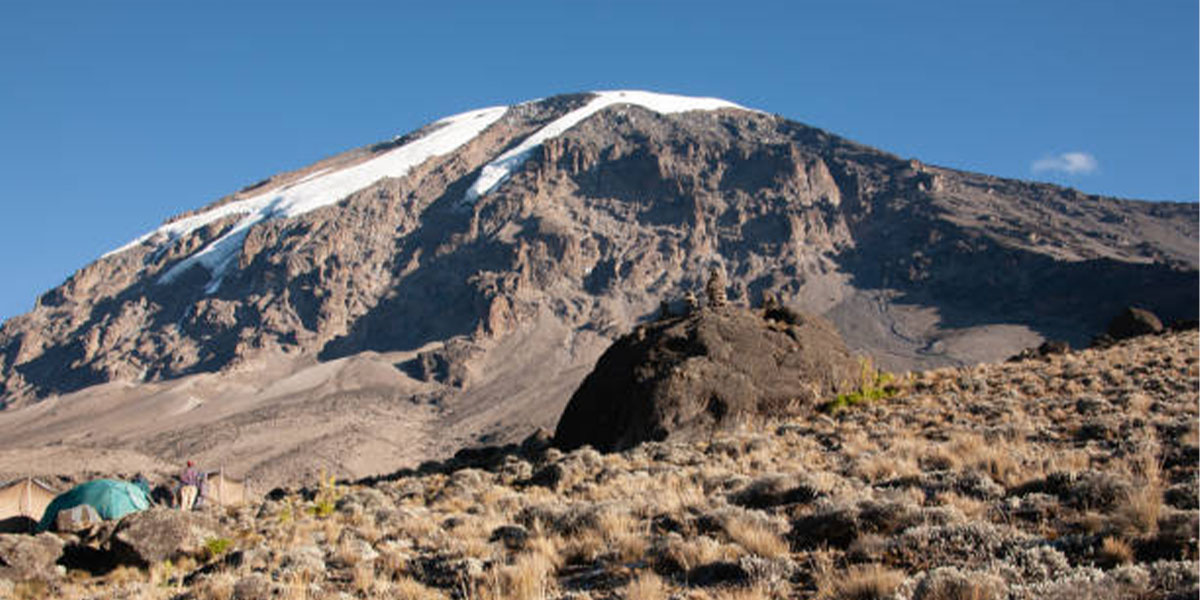
The Machame Route, also known as the “Whiskey Route,” stands out for its stunning views and gradual altitude adjustment, making it an ideal choice for climbers seeking a balance of challenge and achievement. This unique trail welcomes adventurers to embark on a rewarding journey. If you’re new to climbing, fear not—Machame is the perfect starting point for your journey!

The “Coca-Cola Route” is the only one with hut accommodations, offering a unique climbing experience. Ideal for those seeking a more relaxed ascent, Marangu is a favorite among climbers of all levels. Whether you’re part of a group or climbing solo, Marangu welcomes you with warmth and charm.
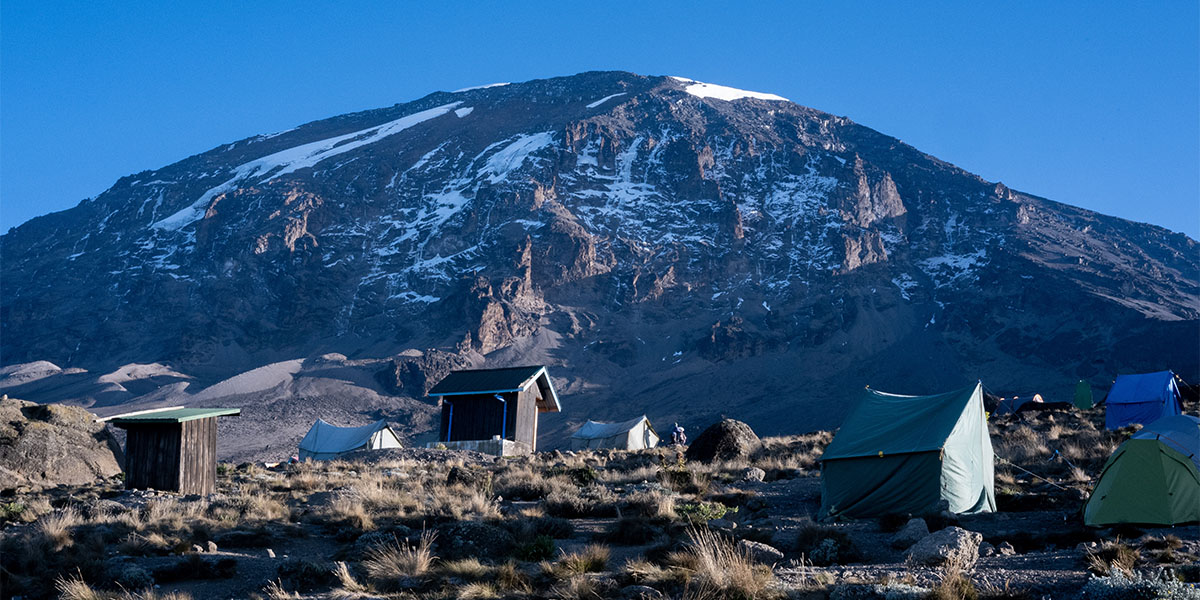
Experience the beauty of Kilimanjaro from a unique perspective on the Lemosho Route. This less-traveled path offers a sense of solitude and tranquility, making it perfect for those seeking a quieter climb. With its gentle slopes and stunning vistas, Lemosho captivates climbers of all levels
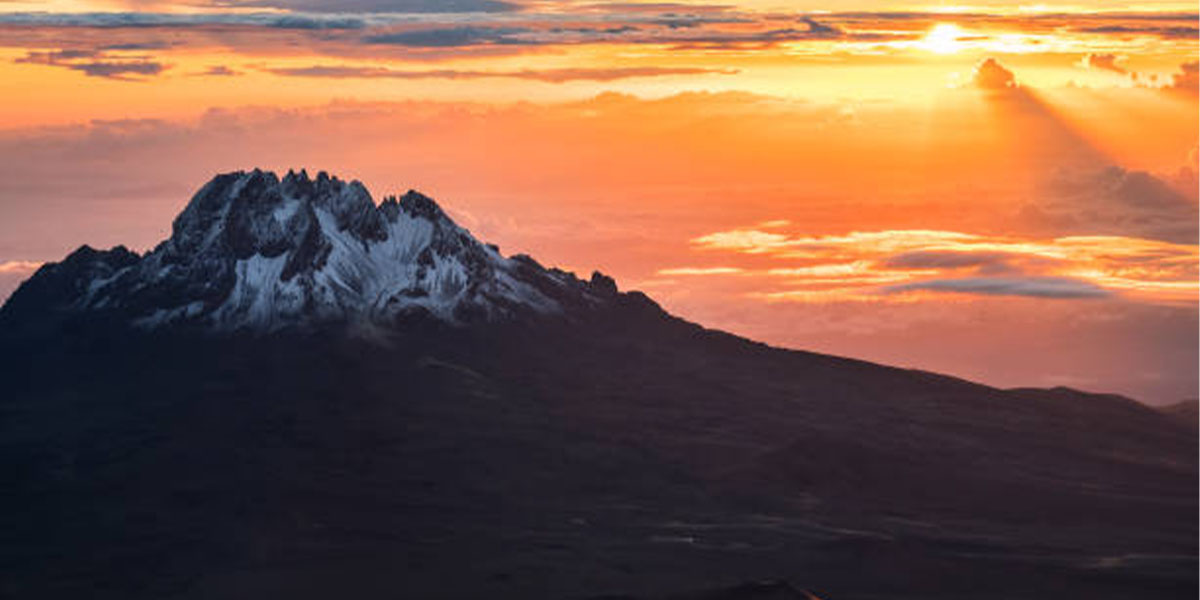
Explore the beauty of Kilimanjaro from a unique perspective on the Rongai Route. This less-traveled path provides a sense of solitude and tranquility, making it perfect for those looking for a quieter climb. With its gentle slopes and breathtaking views, Rongai appeals to climbers of all skill levels.

The Umbwe Route is the steepest and most direct path to Kilimanjaro’s summit. It offers a challenging ascent for experienced climbers and is known for its breathtaking landscapes and fewer crowds. This route provides an exhilarating experience through dense forests and rugged terrain, making it perfect for adventurers seeking a thrilling and intense journey to the top.
Still don't Know which Route to Choose?
Preparing and training for Kilimanjaro
Conquering Kilimanjaro is an extraordinary feat, and proper preparation is the key to ensuring a safe, successful, and unforgettable summit experience. At Chief’s Tours, we understand the importance of being physically and mentally ready for this incredible journey, which is why we’ve developed a comprehensive preparation guide tailored specifically for our Kilimanjaro climbers.

Kilimanjaro is a long trek, so getting your heart and lungs used to sustained effort is key. Aim for at least 3-4 cardio workouts per week, like running, swimming, biking, or brisk walking. Gradually increase the duration and intensity of your workouts as your fitness improves.

Strong legs and core muscles will help you carry your backpack comfortably and navigate uneven terrain. Include exercises like squats, lunges, planks, and bridges in your routine at least 2-3 times per week.

While flat-ground cardio is important, mimicking the actual climb is beneficial. Look for local trails with hills or mountains and gradually increase the elevation gain on your hikes to get your body used to working harder at higher altitudes.

Don’t forget about your arms and shoulders! You’ll be using trekking poles and potentially using ropes for assisted ascents. Include exercises like push-ups, rows, or light weightlifting to build upper body strength.

Consistency is key! Aim for at least 4-5 training sessions per week, even if they’re shorter workouts. Gradually increase the duration and intensity of your training over time to avoid injuries and ensure your body is prepared for the demands of the climb.

Climbing Kilimanjaro is as much a mental challenge as it is a physical one. Our experienced guides will be by your side, equipping you with the mindset, focus, and determination needed to overcome obstacles and reach the summit.
What to pack for a Successful Kilimanjaro Climb
Kilimanjaro Frequently Asked Questions
Reaching Kilimanjaro’s summit requires a combination of physical fitness, preparation, and the right gear. Here are some key ingredients:
- Good Physical Fitness: Train your body for endurance with activities like hiking, cardio, and strength training. Kilimanjaro is not a technical climb, but good physical condition is essential.
- Proper Gear: Sturdy hiking boots, warm clothing for high altitudes, a good quality sleeping bag (especially for camping routes), and a daypack are essential. Some trekking companies offer gear rentals.
- Gradual Acclimatization: Choose a route with a gradual ascent profile to allow your body to adjust to the decreasing oxygen levels at higher altitudes.
- Experienced Guide: A qualified guide is highly recommended. They can provide medical support, manage the pace of the climb, ensure your safety, and offer assistance with acclimatization.
- Positive Mental Attitude: Be prepared for challenging weather conditions and physical exertion. Determination and a positive mindset will go a long way on your climb.
There’s no guaranteed success rate, but it generally ranges from 65% to 98% depending on several factors. The chosen route can impact difficulty, some routes offer more time for acclimatization which helps. The longer your climb, the more time your body has to adjust to the altitude, also increasing your chances. Ultimately, how well your body handles the altitude plays a big role in summit success.



